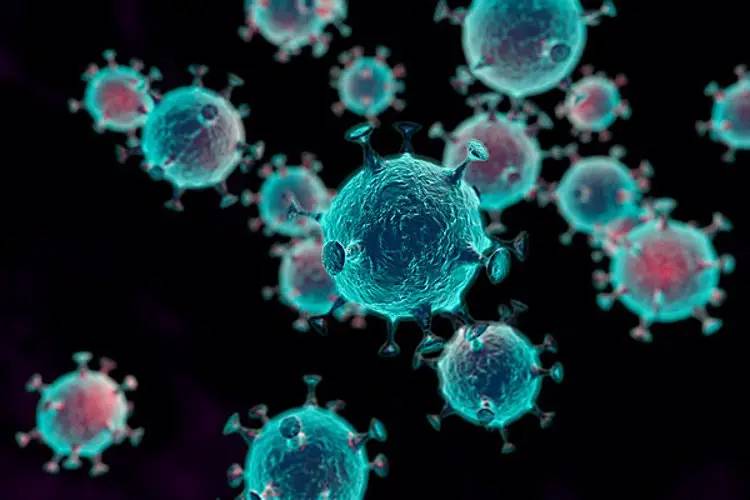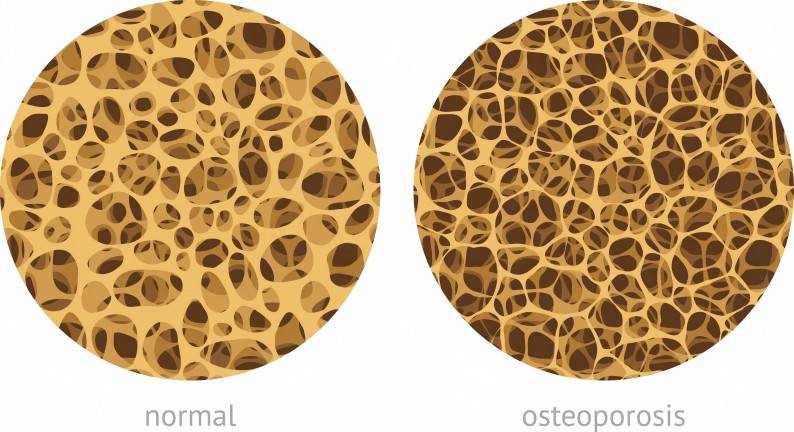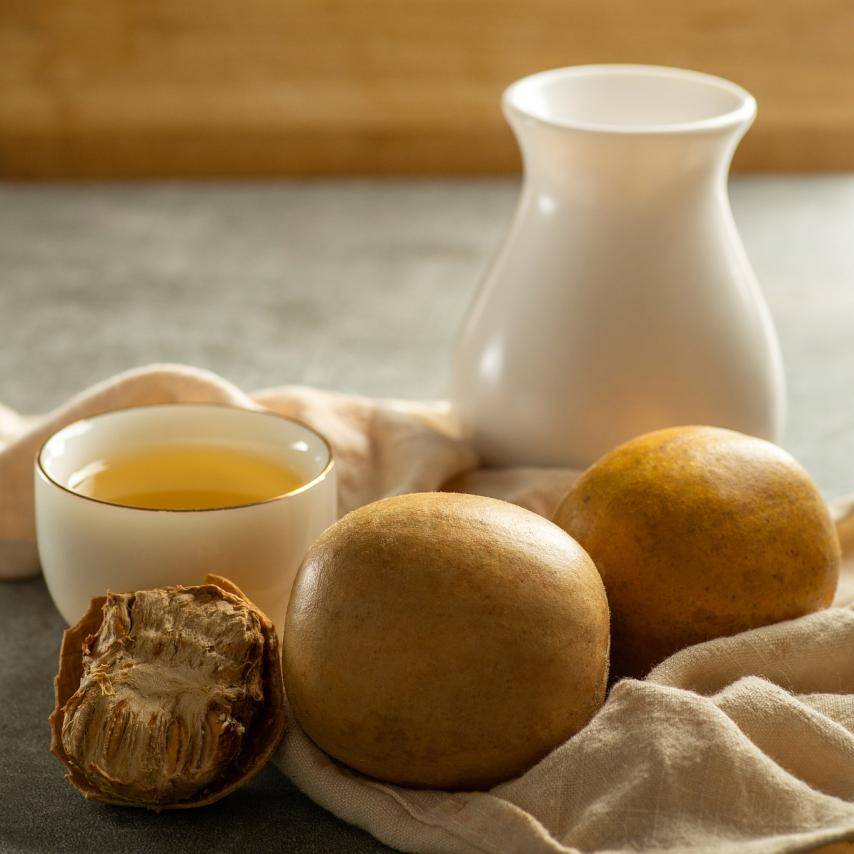What Is the Benefit of Luo Han Guo Extract Mogroside?
Luo Han Fruit belongs to the family Cucurbitaceae and is a perennial herb. It is one of the first batch of Chinese herbal medicines approved for both medicinal and food use in China. It is mainly produced in Guangxi and has the functions of relieving cough, resolving phlegm, anti-inflammatory, anti-oxidation, anti-lipid and anti-blood sugar [1-2]. The main active substance in Luo Han Fruit extract is Luo Han Fruit saponin, and its aglycone is cucurbitane tetracyclic triterpene Luo Han Fruitl. The effects of Luo Han Guo saponin on tumors, inflammation, and immunity are attracting increasing attention, and research in these areas is also increasing. This article provides a review of the effects of Luo Han Guo saponin on tumors, inflammation, and immunity.
1 Luo Han Guo saponin
Luo Han Guo saponin, also known as Luo Han Guo sweet saponin. In 1975, American Lee first reported that the main active substance in Luo Han Guo extract is a tetracyclic triterpene saponin. In 1977, Japanese scholar Takemoto Tsunematsu first extracted Luo Han Guo saponin IV, Luo Han Guo saponin V, and Luo Han Guo saponin VI from Luo Han Guo and discovered their aglycone structure, Luo Han Guo alcohol. Matsumot et al. [3] isolated the tetracyclic triterpenoids acteoside I, loganin IIE, loganin III, loganin IV, loganin V, 11-oxo-loganin V, Luo Han Guo Saponin IIIE. The content of Luo Han Guo Saponin V in Luo Han Guo extract ranges from 0.25% to 1.44%. Its 11-OH is oxidized to =O to form 11-oxo-Luo Han Guo Saponin, which is its main form of existence. Simonin I is currently the sweetest tetracyclic triterpene compound isolated. Kasai et al. [4] found that the sweetness of 1/10,000th concentration of Luo Han Guo saponin V and Simonin I is equivalent to 425 times and 563 times the sweetness of 5% sucrose. As scholars have furthered their research on Luo Han Guo and technology has matured, more and more Luo Han Guo saponins have been isolated and identified. Luo Han Guo alcohol is the aglycone common to all Luo Han Guo saponins. The main difference between the various types of Luo Han Guo saponins lies in the different sugar moieties they are linked to and whether the 11-OH and 7-H of the aglycone are oxidised to =O.

2 Luo Han Guo saponin activity
2.1 Anti-tumor effect
Liu C [5] found that Luo Han Guo Mogroside V can inhibit the phosphorylation of JAK2H and TYK2 kinases upstream of STAT3, thereby inhibiting the activation of STAT3. In vivo experiments in mice have shown that Luo Han Guo saponin V inhibits tumor growth, presumably by inhibiting the STAT3 pathway, which prevents binding to the VEGF promoter and thus inhibits VEGF transcription [6-7].
Midori Takasaki and other scholars [8] isolated Luo Han Guo saponin V and 11-oxo-luo han guo saponin V from the natural plant Luo Han Guo, which have inhibitory effects on the two-stage carcinogenesis experiment of DMBA and TAP-induced mouse skin cancer, with 11-oxo-luo han guo saponin V being the most effective. At the same time, studies have shown that Luo Han Fruit saponin V has a certain inhibitory effect on cell proliferation and promotes apoptosis in lung cancer, pancreatic cancer, colon cancer, and laryngeal cancer. Luo Han Guo alcohol is the aglycone structure of Luo Han Guo saponin. Liu Can et al. [9] found that Luo Han Guo alcohol inhibits proliferation and inducing apoptosis. Liu C et al. [5] found in an in vitro experiment that Luo Han Guo saponin V inhibited the proliferation of pancreatic cancer cells PANC-1 by inhibiting the expression of downstream proliferation-promoting genes (cyclinD1, cyclingE1, CDK2) in the STAT3 pathway and upregulating cell cycle proteins (p21 and p27). Meanwhile, Liu C et al. [10] found that mogroside IVE upregulates p53, inhibits the phosphorylation of p-ERK1/2, downregulates MMP-9, promotes apoptosis in colorectal cancer cells HT29 and laryngeal cancer cells Hep-2, and inhibits their invasion and metastasis.
It has now been found that the biometabolite of mogroside (Mogorl) also has anti-leukemia effects [11]. It induces apoptosis in K562 cells by inhibiting the ERK1/2 and STAT3 pathways and downregulating Bcl-2 expression, and it also upregulates p21 to inhibit proliferation.
Weerawatanakorn M et al. [12] found that Luo Han Guo extract can inhibit tumorigenesis by inhibiting the NF-kB signaling pathway to inhibit the transcription of tumor-associated proteins and inhibiting inflammation-related tumorigenesis mechanisms in a mouse skin carcinogenesis test induced by the TAP promoter factor.
2.2 Anti-inflammatory and antioxidant effects
Li Meifeng [2] found that in a mouse model of non-alcoholic steatohepatitis (NASH), Luo Han Guo saponin water extract can further improve the inflammatory response by inhibiting the expression of inflammation-related genes TNF-α, IL-1β, and IL-6, and is effective in the treatment of NASH. Yoon-Young Sung [13] and other scholars found that the saponin extract of Luo Han Guo (SGRE) can reduce the total number of lymphocytes in the lungs and bronchoalveolar lavage fluid (BAL) of mice with an OVA-induced asthma model, and exert an anti-inflammatory effect by reducing the high expression of the inflammatory factors TNF-α and IL-17 in the lung model. Chi Yu [14] observed in clinical practice that Luo Han Guo has a significant effect in relieving the symptoms of tonsillitis and pharyngitis.

Zou Jian [15] and other scholars found that six Luo Han Guo saponins (Luo Han Guo saponin IIA2, Luo Han Guo saponin V, Luo Han Guo saponin VI, Luo Han Guo saponin III, Luo Han Guo saponin IV, 11-oxo-Luo Han Guo saponin V) all have certain antioxidant activity, of which Luo Han Guo saponin IIA2 has the strongest ability to scavenge free radicals and reduce iron ions. Huang Wenwei [16] and other scholars found in a rat model of myocardial injury caused by amylase that Luo Han Guo saponin can significantly increase the superoxide dismutase (SOD) value of rats in the model group, reduce oxidative stress, and thus improve the antioxidant capacity of rats with myocardial injury. Yu Wanquan [17] and other scholars established a rat model of gestational diabetes mellitus (GDM) and confirmed that Luo Han Guo saponin extract can alleviate oxidative stress damage to pancreatic tissue in model rats, and this effect is dose-dependent. The mechanism may be related to the activation of the Kelch-like ECH-associated protein 1 (Keap1)-nuclear factor E2-related factor 2 (Nrf)/antioxidant response element (ARE) pathway.
2.3 Immune effects
Experiments by Zhang Haiquan [18] et al. showed that Luo Han Guo polysaccharide can antagonize the immunosuppressive effect caused by cyclophosphamide, and has a good effect on promoting the innate immunity, cellular immunity and humoral immunity of immunosuppressed mice, restoring the body's disease resistance and significantly enhancing the immune capacity of immunosuppressed mice. Li Jun [19] and others found that the polysaccharide components of Luo Han Guo can also significantly increase the weight of immune organs such as the thymus and spleen in mice, as well as the percentage and phagocytic index of macrophages in the abdominal cavity of mice, increase the level of serum hemolysin, and increase the lymphocyte transformation rate. The results show that Luo Han Guo polysaccharide SPGS has a significant immune enhancing effect on cellular immunity, humoral immunity and non-specific immunity in mice.
2.4 Anti-osteoporosis
Bone homeostasis is a dynamic balance between osteoblasts and osteoclasts. Imbalance in either direction can lead to bone disease. Yao Shunhan [20] and others explored the effects of Luo Han Guo saponin V on osteoblast proliferation and differentiation, It was found that the experimental concentration of 1.25×10-2 g/L of Luo Han Guo saponin V can significantly increase the alkaline phosphatase activity of osteoblasts, promote cell mineralization, and promote the expression of RUNX2, BSPOCN and COL1A1 genes, which indicates that Luo Han Guo saponin V can promote the proliferation and differentiation of osteoblasts, providing an experimental reference for the prevention of osteoporosis.

3 Summary
Luo Han Fruit is a traditional Chinese medicine and an important export commodity in China, with the reputation of “the divine fruit of the East”. Luo Han Fruit saponin, as the main active substance of Luo Han Fruit, has become a research hotspot in recent years, and new progress has been made in terms of tumors, inflammation, immunity and osteoporosis. Luo Han Fruit Mogroside V has an inhibitory effect on tumor cell growth. Experimental results suggest that Luo Han Fruit saponin V may inhibit tumor angiogenesis by blocking STAT3 activation and thus preventing the activation of the VEGF-dependent mechanism. However, further experiments are needed to prove the specific link. The antioxidant activity of six Luo Han Fruit saponin compounds has been confirmed, but the antioxidant capacity of Luo Han Fruit saponin III, Luo Han Fruit saponin IV, and 11-oxo-Luo Han Fruit saponin V have different antioxidant capacities in different systems. It is speculated that this may be due to the different glucose moieties linked at the 3- and 24-positions of the aglycone, but the specific reason remains to be further studied.

Research on Luo Han Guo saponin in the fields of anti-tumor, anti-inflammatory and antioxidant, immune enhancement and anti-osteoporosis is deepening. Although the specific mechanism of action needs to be further explored, its activity characteristics show its great potential in the medical field. Further research on its mechanism of action may provide new solutions to human health problems.
References
[1] Lv Jinyan, Huang Jiayong, Yuan Caiying, et al. Research on the active ingredient target of Luo Han Guo for cough and phlegm based on network pharmacology [J]. Journal of Natural Sciences of Hunan Normal University, 2019, 42 (1): 40-48.
[2] Li Meifeng. Study on the efficacy and mechanism of Luo Han Guo water extract and Luo Han Guo glycoside V in the treatment of non-alcoholic fatty liver disease [D]. Guangzhou: Guangdong Pharmaceutical University, 2017.
[3] Matsumoto K,Kasai R,Ohtani K,et al. Minor cucurbitane- glycosides from fruits of Siraitia grosvenori (Cucurbitaceae)[J] . Chemical & Pharmaceutical Bulletin,2008,38(7):2030-2032.
[4] Kasai R,Nie R L,Nashi K,et al. Sweet Cucurbitane Glycosides from Fruits of Siraitia siamensis(chi-zi luo-han-guo),a Chinese Folk Medicine[J]. Journal of the Agricultural Chemical Society of Japan,1989,53(12):3347-3349.
[5] Liu C,Dai L H,Dou D Q,et al. A natural food sweetener with anti- pancreatic cancer properties[J]. Oncogenesis,2016,5(4):e217.
[6] Waziri P M,Abdullah R, Rosli R,et al. Clausenidin Induces Caspase 8-Dependent Apoptosis and Suppresses Production of VEGF in Liver Cancer Cells[J]. Asian Pacific Journal of Cancer Prevention Apjcp,2018,19(4):917-922.
[7] Itatani Y,Kawada K,Yamamoto T,et al. Resistance to Anti- Angiogenic Therapy in Cancer-Alterations to Anti-VEGF Pathway.[J]. International Journal of Molecular Sciences,2018,19(4):1232.
[8] Takasaki M,Konoshima T,Murata Y, et al. Anticarcinogenic activity of natural sweeteners, cucurbitane glycosides, from Momordica grosvenori[J]. Cancer Letters,2003,198(1):37-42.
[9] Liu Can, Cai Tianyu, Zhao Xiaomeng, et al. Study on the induction of apoptosis in lung cancer cells A549 by Luo Han Guo extract [J]. Bulletin of Chinese Pharmacology, 2015 (9): 1310-1314.
[10] Liu C,Dai L,Liu Y,et al. Antiproliferative Activity of Triterpene Glycoside Nutrient from Monk Fruit in Colorectal Cancer and Throat Cancer[J]. Nutrients,2016,8(6):360.
[11] Liu C,Zeng Y,Dai L H,et al. Mogrol represents a novel leukemia therapeutic,via ERK and STAT3 inhibition[J]. American Journal of Cancer Research,2015,5(4):1308.
[12] Weerawatanakorn M,Yang J R,Tsai M L,et al. Inhibitory effects of Momordica grosvenori Swingle extracts on 12-O-tetradecanoylphorbol 13-acetate-induced skin inflammation and tumor promotion in mouse skin.[J]. Food & Function,2014,5(2):257-64.
[13] Yoon-Young.Sung,Seung-Hyung.Kim,Heung.Joo.Yuk,et al. Siraitia grosvenorii residual extract attenuates ovalbumin- induced lung inflammation by down-regulating IL-4,IL-5,IL- 13,IL-17,and MUC5AC expression in mice[J]. Phytomedicine,2019,61(61):152835.
[14] Chi Yu. Observation of the efficacy of Luo Han Guo in the treatment of tonsillitis and pharyngitis [J]. World Latest Medical Information Digest, 2018, 18(49): 169.
[15] Zou Jian, Chen Qiuping, Liu Hesheng, et al. Research on the antioxidant activity of Luo Han Guo saponins [J]. Journal of Nuclear Agriculture, 2016, 30 (10): 1982-1988.
[16] Huang Wenwei, Hong Lifeng, Guo Fan, et al. Regulation of oxidative stress and apoptosis by Luo Han Guo saponins in rats with doxorubicin-induced myocardial injury [J]. Journal of Liaoning University of Traditional Chinese Medicine, 2019, 21 (6): 1-4.
[17] Yu Wanquan, Du Xiaona, Liu Qiaomin, et al. Effects of Luo Han Guo saponins on oxidative stress damage in rats with gestational diabetes. Chinese Journal of Clinical Pharmacology, 2019, 35(21): 2723-2727.
[18] Zhang Haiquan, Huang Qinying, Zheng Guangjin, et al. Effects of Luo Han Guo polysaccharide on immune function in mice with immunosuppression caused by cyclophosphamide [J]. Guangxi plants, 2019, 9 (11): 1573-1582.
[19] Lijun, T. Mogroside IIIE, a novel anti-fibrotic compound, reduces pulmonary fibrosis through toll-like receptor 4 pathways [J]. The Journal of pharmacology and experimental therapeutics, 2017, 2
(361): 268-279.
[20] Yao Shunhan, Liao Liang, Qin Jiagang, et al. Luo Han Guo saponin V stimulates osteoblast proliferation and differentiation [J]. Chinese Journal of Tissue Engineering Research, 2019, 23(29): 4701-4706.


 English
English French
French Spanish
Spanish Russian
Russian Korean
Korean Japanese
Japanese






